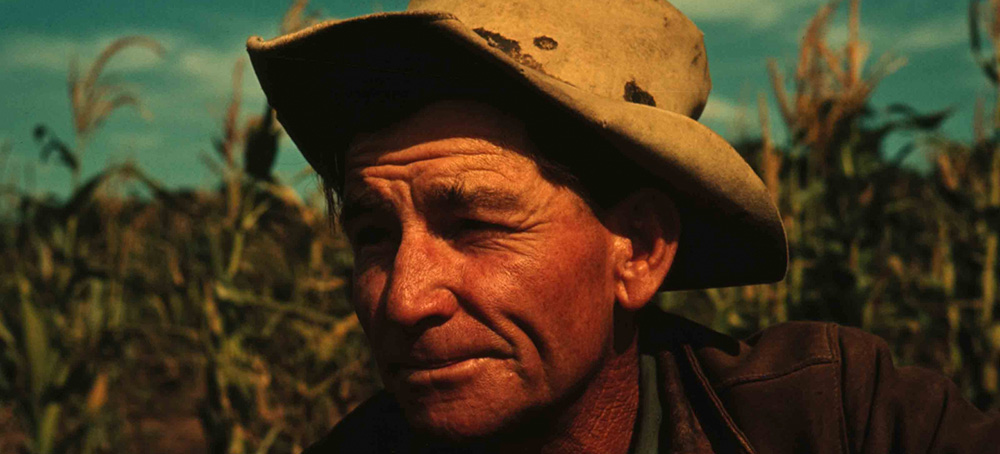ART-PRESENTATION: Sherrie Levine-After Russell Lee 1-60
 Sherrie Levine along with artists such as Cindy Sherman and Richard Prince, questions how images are culturally constructed and the effects of their dissemination in a media-saturated age. Levine’s work introduces perceptual questions about what exactly one is looking at and asks viewers to consider the reasons why we inherently trust and often fetishize values in art such as authenticity and originality. Copying and replicating the work of male artists Levine also levels a feminist critique against the ingrained patriarchy of art history and society.
Sherrie Levine along with artists such as Cindy Sherman and Richard Prince, questions how images are culturally constructed and the effects of their dissemination in a media-saturated age. Levine’s work introduces perceptual questions about what exactly one is looking at and asks viewers to consider the reasons why we inherently trust and often fetishize values in art such as authenticity and originality. Copying and replicating the work of male artists Levine also levels a feminist critique against the ingrained patriarchy of art history and society.
By Dimitris Lempesis
Photo: David Zwirner Gallery Archive
On view for the first time in Sherrie Levine’s solo exhibition “Pie Town” is her series “After Russell Lee: 1-60” (2016), a continuation of Levine’s ongoing practice of photographing reproductions of artworks, Levine revisits one of Russell Lee’s most influential projects, a 1940 group of color photographs that depicts life in Pie Town, New Mexico. In rephotographing photographs, Levine lays bear the paradoxes of originality and authenticity inherent in the medium. She also raises questions about how the artistic, or aesthetic, value of a work of art is wrapped up with notions of artistic genius and how that value is then monetized, based on singularity and rarity, in the art market. Levine appropriated Barthes’ own words when she wrote, “A painting’s meaning lies not in its origin, but in its destination. The birth of the viewer must be at the cost of the painter”. Also on presentation is a number of cast bronze sculptures that appropriate objects from outside of the Western canon are on view, including “Gamelan Figures”, “Naga Effigy”, and “Little Dancer” (all 2017), as well as “Monochromes after Van Gogh Sunflowers: 1-12” (2015) in which the artist makes use of pixelation to produce a series of monochromatic panels where the individual colors are derived from Van Gogh’s iconic paintings. In 1935 Russell Lee began to photograph miners and record conditions in Pennsylvania coalmines. His growing interest in social issues and his affinity for photography as a means of recording social conditions brought him in contact with other visual artists, among them Pare Lorentz and Ben Shahn, whose work he admired. He heard that Shahn was involved with the documentation program of the Historic Division of the Resettlement Administration, later renamed the Farm Security Administration, and decided to seek a job there. His first assignment for Roy Stryker was to photograph the Jersey Homesteads housing project in 1936. When Carl Mydans left the agency, Stryker offered Lee a full-time job. Part of the team that also included Dorothea Lange, Arthur Rothstein and Walker Evans, Lee’s primary task was to document rural communities with the goal of making urban Americans aware of the plight of tenant farmers, sharecroppers, and migrant workers stricken by drought and the Great Depression. Stryker assigned Lee to cover the Midwest and the West Coast, where he typically stayed on the road much longer than expected. Lee made some of his better-known early photographs in rural Iowa in 1936. He traveled throughout Texas and New Mexico between 1939 and 1940.
Info: David Zwirner Gallery, 24 Grafton Street, London, Duration: 4/10-18/11/17, Days & Hours: Tue-Sat 10:00-18:00, www.davidzwirner.com
